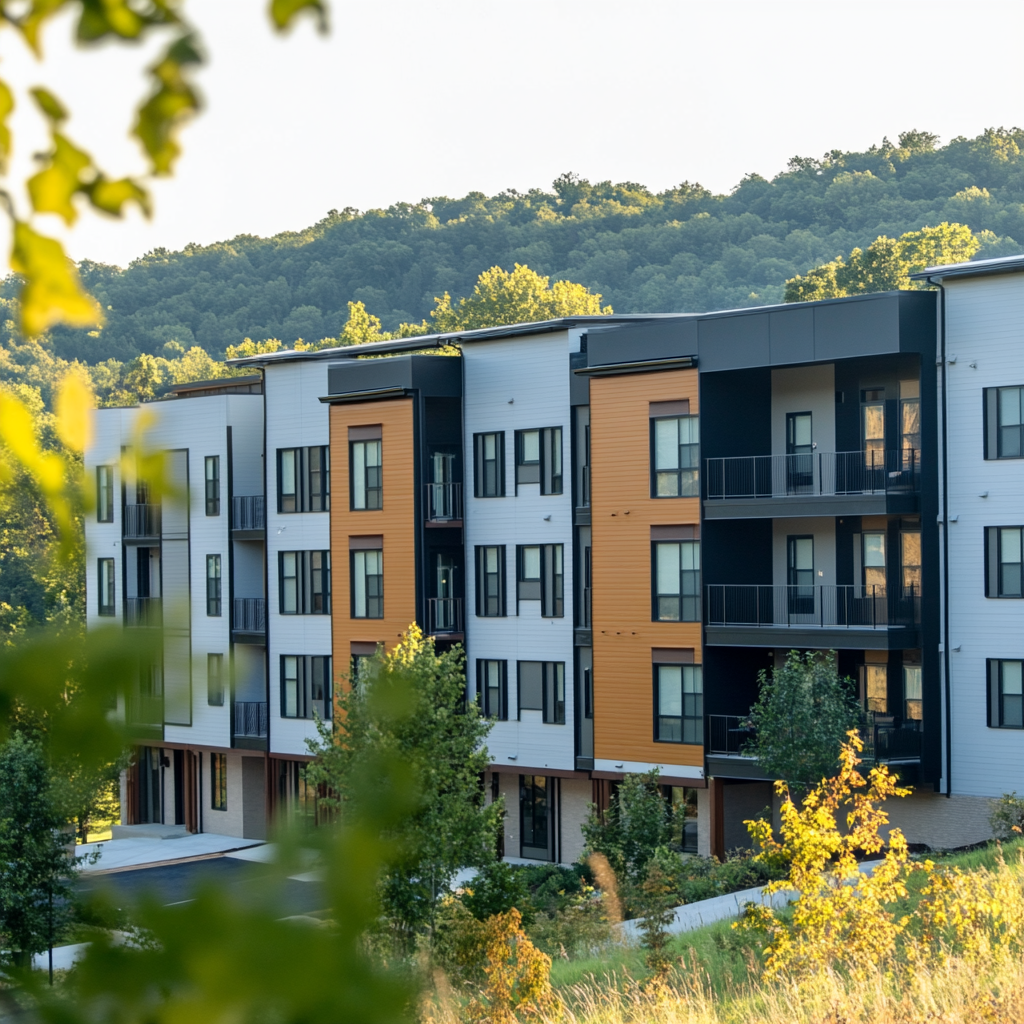Real estate investors in Morgantown often want to diversify portfolios and increase their rental income. Incorporating multi-family properties into your investments could be a smart move.
Multi-family properties, which consist of two or more units in a single building, offer several advantages over single-family investments. For example, they allow you to generate more rental income from a single property, and they tend to have lower vacancy rates than single-family homes. However, investing in multi-family properties requires a different approach than investing in single-family homes.
Pros and Cons of Investing in Multi-Family Properties:
Multi-family properties are properties that are designed to house multiple families or individuals. They typically have multiple units, each with their own kitchen, living room, and bedroom(s). Multi-family properties can be apartment buildings, townhouses, or duplexes. Multi-family properties are typically purchased by real estate investors looking for a steady stream of rental income.
Pros:
1. Higher Rental Income: Multi-family properties have higher rental income potential since they can house multiple families or individuals. This means that investors can generate more rental income from a multi-family property than they can from a single-family home.
2. Diversification: Investing in multi-family properties can offer diversification since the investment is spread across multiple units.
3. Lower Vacancy Risk: Since multi-family properties can house multiple families or individuals, the risk of vacancy is lower. This means that investors can enjoy a more consistent stream of rental income.
Cons:
1. Higher Maintenance Costs: Multi-family properties generally have higher maintenance costs than single-family homes. This is because there are more units to maintain, which can increase the cost of repairs and upkeep.
2. More Difficult to Finance: Multi-family properties are more difficult to finance than single-family homes. This is because banks and lenders are more cautious about approving loans for multi-family properties due to the higher risk of default.
3. Lower Appreciation: Multi-family properties tend to appreciate at a lower rate than single-family homes. This is because multi-family properties are typically in lower demand among homebuyers.
Regardless of which option you choose, it is important to do your research and work with a professional real estate agent who can guide you through the investment process. A real estate agent can help you find the right property that fits your investment goals and provide valuable insights into the local real estate market. With the right strategy and guidance, investing in real estate in Morgantown can be a profitable and rewarding experience.
Here are 10 things to look for when buying multi-family properties:
- Location: The importance of location cannot be overstated in real estate investment. For multi-family properties, ideal locations are those that offer easy access to amenities such as public transportation, shopping centers, hospitals, and parks. Additionally, consider the economic stability and growth prospects of the area. A neighborhood on the rise can significantly increase the value of your investment over time.
- Number of Units: The number of units in a property directly impacts your revenue potential and management workload. Properties with more units offer the advantage of income diversification; if one unit is vacant, others can still generate income. However, more units also mean more tenants to manage and potentially more repairs. Assess your capacity to handle these responsibilities or consider the cost of hiring a property manager.
- Condition of the Property: A thorough inspection is crucial. Look beyond cosmetic issues to structural, electrical, and plumbing systems. Assess the age and condition of major components like the roof, HVAC systems, and appliances. Understanding these factors will help you estimate future capital expenditures and negotiate the purchase price.
- Rental Income: Analyze the current rent roll and compare it with market rates. Investigate the potential for rent increases and consider the impact of local rent control laws. Additionally, understand the lease terms of current tenants and their payment history to gauge the stability of your rental income.
- Expenses: Operating expenses go beyond just maintenance and utilities. Consider insurance costs, potential legal fees, and reserves for unexpected repairs. Analyzing historical expense data, if available, can provide valuable insights into the property’s financial performance.
- Cash Flow: Project your net cash flow by subtracting all operating expenses from the total rental income. Be realistic in your estimations and include a buffer for unexpected costs. Positive cash flow is crucial for the sustainability of your investment.
- Financing Options: Explore various financing avenues. Terms and rates can vary significantly between traditional mortgages and commercial loans. Understand the implications of each option, including down payment requirements, interest rates, and loan terms. Sometimes, seller financing can be a viable option, offering more flexible terms.
- Property Management: Decide if you have the time and expertise to manage the property yourself or if hiring a professional manager is more feasible. Property management involves tenant relations, maintenance, rent collection, and legal compliance. Weigh the cost of a property management service against the time and effort you would save.
- Tenant Screening: Implement a rigorous screening process. This should include credit checks, employment verification, and references from previous landlords. A good tenant can significantly reduce the costs and headaches associated with property management.
- Exit Strategy: Plan your exit strategy considering market trends and personal investment goals. This could involve selling at a peak market value or holding the property to continue generating rental income. Understand the tax implications of selling and consider options like 1031 exchanges for deferring capital gains tax.
Investing in multi-family properties can be a great way to diversify your portfolio and increase your rental income. However, it’s important to approach these investments with a different mindset than single-family homes. By considering these ten factors when buying multi-family properties, you can make smart investment decisions that will pay off in the long run. Ready to invest in multi-family properties in Morgantown? Reach out to Venture Buys Homes to find out how we can help! 304-244-3048

